The Flying Longhorns Remember—and Rediscover—Vietnam
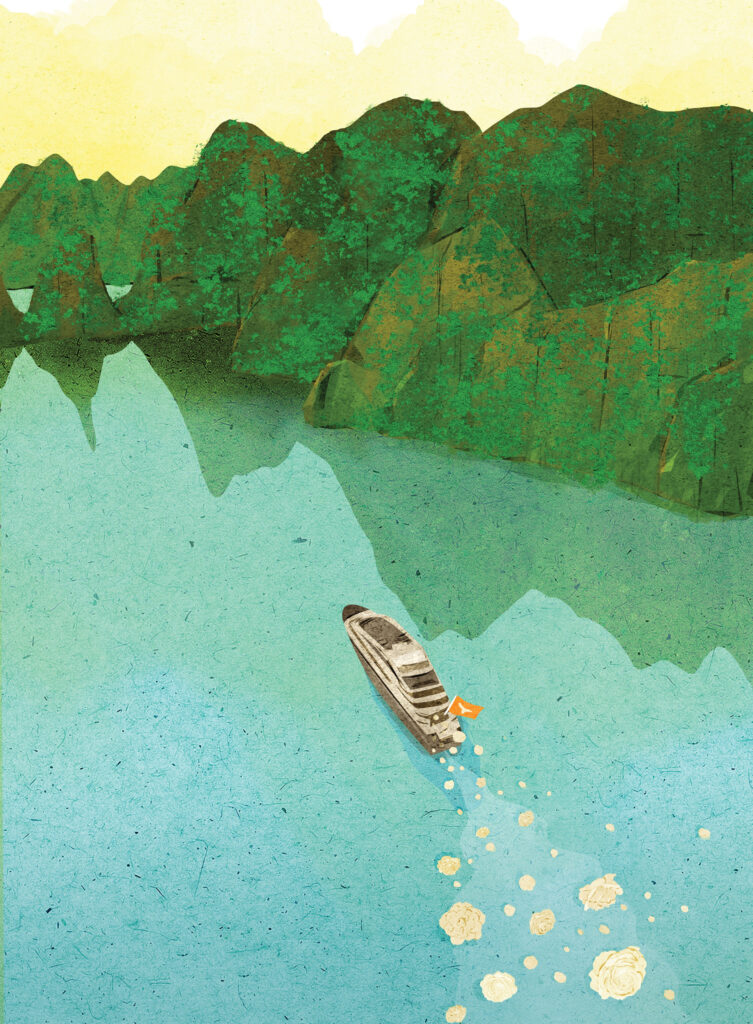
On our first day in Ho Chi Minh City, the Flying Longhorns inadvertently offended the sensibilities of the Socialist Republic of Vietnam. We had assembled for a group photo in front of the Reunification Palace, the former headquarters of the government of South Vietnam, where in April 1975, a North Vietnamese tank came crashing through the front gate in one of the iconic images of the fall of Saigon.
All was calm until we made the mistake of unfolding the Longhorn flag, a gesture that greatly alarmed a nearby guard. He ran up demanding that we put the flag away and that our tour guide erase any photos that had been taken of it.
The guide, the son of a South Vietnamese soldier who had vanished into a re-education camp nearly 50 years earlier, made a show of complying, though he somehow managed to save one image of us with our forbidden flag.

Nobody explained why a simple burnt-orange banner with a white steer’s head could cause so much disruption, but I suspected that a thousand years or more of invasions—by the Chinese, the French, the Americans—had made Vietnam wary of the sudden appearance of foreign flags.
There were 19 of us gathered in front of the palace, a gleaming example of Cold War architecture complete with cabinet rooms, banquet halls, and an underground complex of suffocating bombproof rooms filled with grim metal furniture and ancient telecommunications equipment. Most of us were in our 60s and 70s, old enough to reflexively still associate the word “Vietnam” with the word “war,” all too aware that as we traveled through this country—to Saigon, to Da Nang, to Hue, to Hanoi—there would be no place to hide from the history that had, long ago, in one way or another, hijacked all of our lives.
Vietnam in 2024 is a surging leisure destination, a place of sprawling beachfronts and brand-new, Chinese-built hotels and towering cruise ships, but to people of my generation, a trip to Vietnam is less a vacation than it is a reckoning.
That reckoning began with what would have been an incomprehensible thought experiment to my 20-year-old University of Texas self. A tour of Vietnam meant something a lot different then, far more ominous than it did when I was asked to be a host for the Texas Exes on this improbable, luxury excursion.
My first unreal, jet-lagged glimpse of the country took place in Saigon—or Ho Chi Minh City, as it’s been officially known since its conquest by the Communist forces of North Vietnam in 1975. The dated impression I had of a quaint colonialist capital of intrigue disappeared immediately. True, even on a February day you could still sweat through your shirt in five minutes like a Graham Greene character, but Ho Chi Minh City was a frenetic metropolis of 9 million.
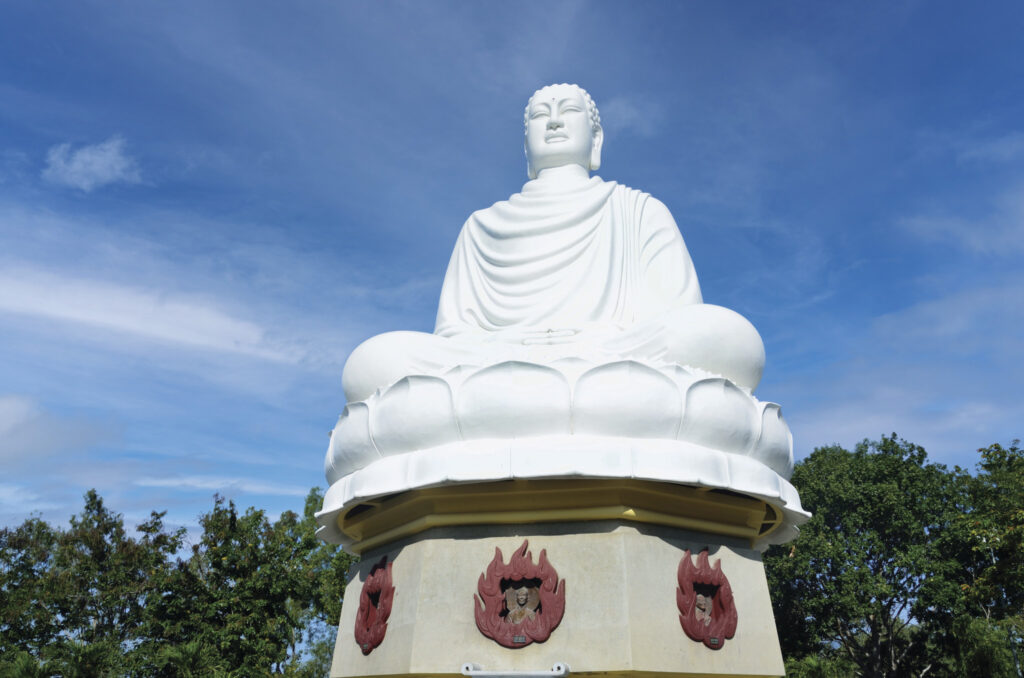
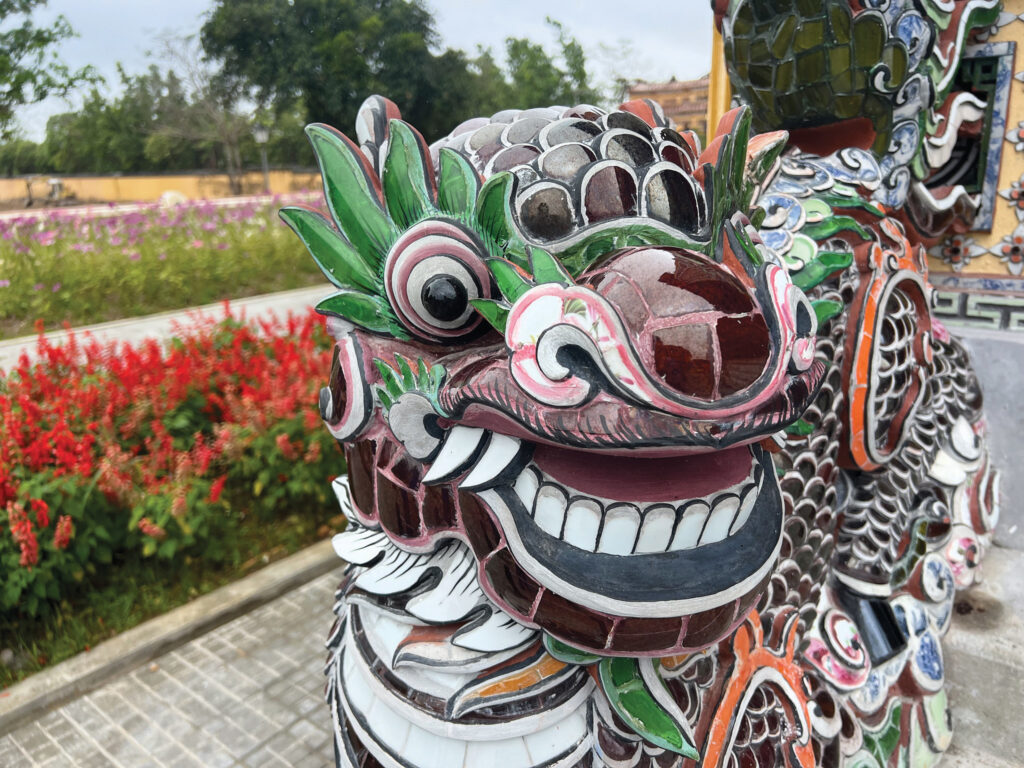
It’s a place where old Indochine landmarks like opera houses and cathedrals stand in the shade of gargantuan housing blocks and buildings like the Bitexco Financial Tower, whose 52nd floor helipad juts out into the sky like a serving tray. There are few traffic lights to channel the city’s raging river of motorbikes, though there is a logic to all the movement that is as hard for a foreign visitor to grasp as the bewildering tonalities of the Vietnamese language.

Ho Chi Minh, the former president and eternal nationalist hero of Vietnam, was everywhere in the city that had been renamed in his honor. It was hard to miss his portrait peering down on us as we explored the breezy, French-designed barrel vault of the Central Post Office. And there was no starker display of the Communist/capitalist nature of today’s Vietnam than the 23-foot-high statue of Uncle Ho that stood in front of the city’s ornate city hall, only steps away from a block of luxury storefronts including Cartier and Chanel.
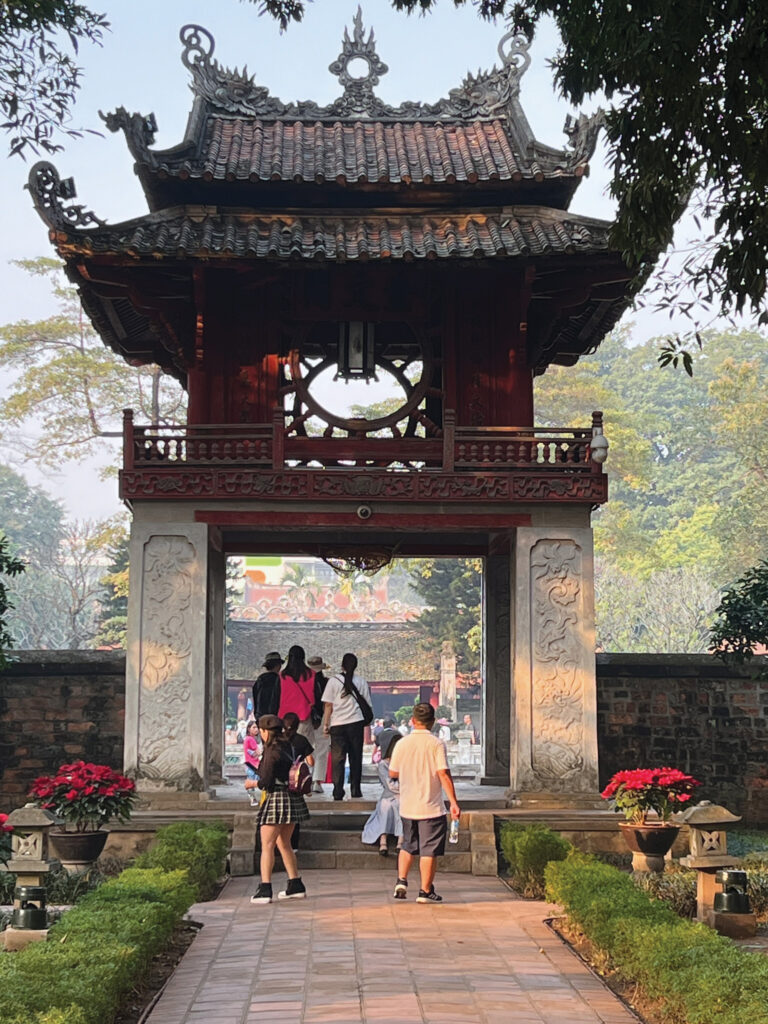
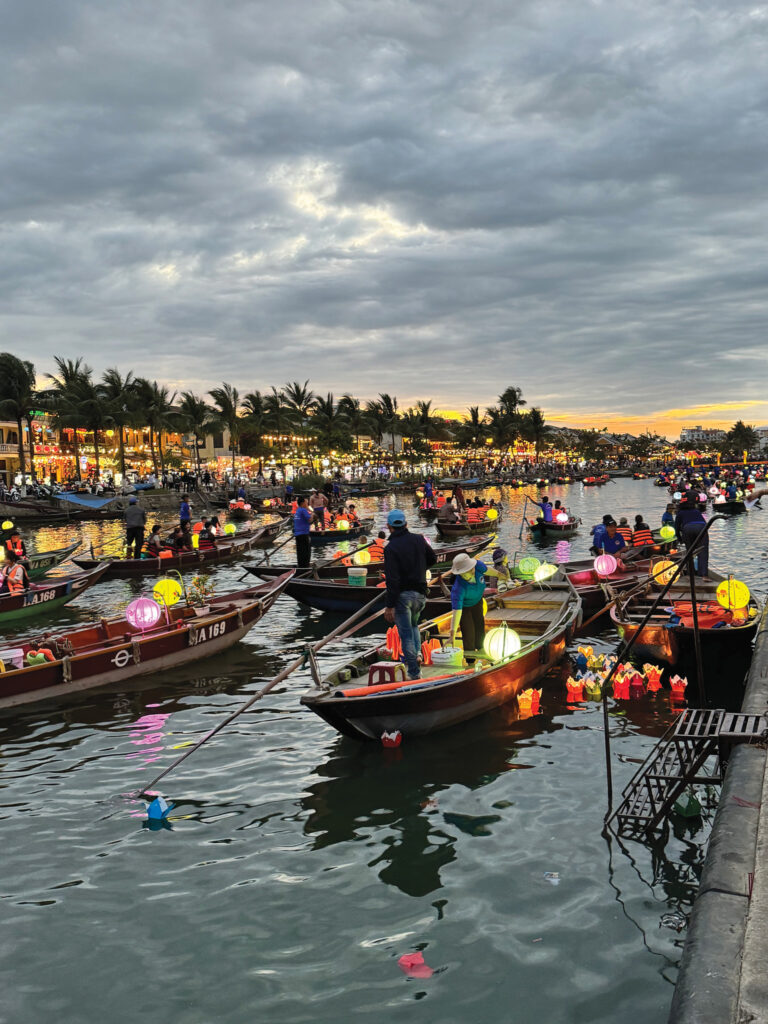
We visited the somber attraction that our guide said used to be called—in the days before U.S. and Vietnam relations were normalized in the 1990s—the “American Imperialists and Their Henchmen War Crimes Museum.” It was now known simply as the War Remnants Museum, but it was still a disquieting place to be an American tourist, its galleries full of uncompromising photos of mutilated bodies and birth defects resulting from Agent Orange.
Another sobering reality check was the Cu Chi Tunnel complex, which we reached via an hour-and-a-half speedboat ride up the Saigon River as the city—its shimmering, Oz-like buildings and then its unlovely outskirts—slowly dissolved beyond the horizon.
The Cu Chi Tunnels is a major Vietnamese historical site, with a parking lot filled with tour buses and an orientation center showing an introductory film praising the Viet Cong—the “American-killer heroes”—who had endured life and war underground in a vast tunnel system.
“Like a crazy batch of devils,” the film’s narrator told us, “the Americans fired into women and children, chickens and ducks, and even into Buddhist statues.”
After the movie, there was a guided tour of the tunnels, or at least the few hundred feet of them open to the public. The tunnel segments had been enlarged to accommodate the bodies of American imperialist tourists, but we still experienced them as a claustrophobic crawl space. It was left to our imaginations to ponder how 10,000 people could have survived in, and fought from, what amounted to a giant ant farm dug into the hard clay three stories deep, while being hunted by American and South Vietnamese troops and blasted by 500-pound bombs dropped from B-52s.
We saw models and graphic mural depictions of homegrown booby traps—the “folding chair trap,” the “fish trap,” the “clipping armpit trap”—and demonstrations of how the Viet Cong had suppressed the smoke from underground kitchens, made “Ho Chi Minh sandals” from old tires, and created subterranean bottlenecks to trap oversized enemy “tunnel rats.”
It was incongruous, to say the least, to leave the Cu Chi Tunnels and sail away that night on Le Jacques Cartier, a luxurious French cruise ship where dinners always began with an amuse-bouche and where every evening a steward delivered to our staterooms a macaron or artisanal chocolate or a petite madeleine that came in a box with a picture of Marcel Proust. As we sailed north through the South China Sea toward Hanoi, we left those tunnels far behind, but not the impression of an enemy whose resilience, determination, and clarity of purpose had made our country’s muddled adventure in Vietnam such an unwinnable conflict from the beginning.
At the War Remnants Museum back in Ho Chi Minh City, one of the images on display had been perhaps the most memorable and searing photo of the Vietnam War: a young girl, her clothes burned off, screaming in pain, running down the road after her village had been bombed. It was “The Terror of War,” the Pulitzer Prize-winning image taken by Nick Ut, a South Vietnamese photographer for the Associated Press, who in the moments after snapping the photo on a June day in 1972 had put down his camera and sped the child to a hospital.
The girl whose anguish he had chronicled and whose life he had saved was Kim Phuc, and she was one of several guest lecturers—along with Ut himself—on the cruise. The “napalm girl” was now a gracious, disarmingly serene woman of 60. The only visible evidence of the horror she had endured were the smooth burn scars along her left arm and on the back of her neck, just above the collar of the ao dai, the traditional Vietnamese dress she wore as she stepped confidently to the podium of the ship’s theater.
“I was a child,” she told her shipmates on Le Jacques Cartier. “For nine years I felt safe and loved. I knew nothing of pain. I had only fallen off my bicycle. But napalm is the most terrible pain you can imagine.”

She talked about the 14 months she spent in the hospital after her village was bombed, the 17 initial surgeries she had endured, her lifetime struggle to learn to overcome the bitterness and hate—black as coffee, she said—that had threatened to fill her heart.
“The most important lesson I learned is how to forgive,” she concluded. “When you see the photo of this little girl running up the road, try not to see her as she was then, wounded, suffering, crying out in pain. Try to see her as she is today, as a woman, a mother, a grandmother crying out for peace.”
Our nine-day voyage up the coast of Vietnam was a mixture of sobering shipboard lectures and picturesque shore excursions. We disembarked at Nha Trang to visit the still-standing eighth-century temple towers built by the Cham people who had once dominated this part of Vietnam. We explored UNESCO World Heritage sites such as the old trading port of Hoi An, or the islands that rear abruptly out of the foggy waters of Ha Long Bay, and whose jungle exteriors conceal limestone caverns of breathtaking expansiveness. In some parts of the country, the dense forests with their triple canopies shone bright with an almost bioluminescent green. In others, the natural wonders were endless beaches with lazy vectors of currents or the captivating cragginess of giant river boulders.
Though Vietnam presented itself to us as a timeless place, strange centuries deep, there were reminders everywhere of its more recent history and the war that was, for almost all the passengers on our ship, still a living and unresolved memory. On a hill above the Long Son Pagoda in Nha Trang, for instance, a 46-foot-high statue of Buddha in white marble stared placidly out over the city. But what caught my attention was the pedestal on which the Buddha rested, which was decorated with portraits, framed in bronze flames, of the monks who had immolated themselves to protest the U.S.-backed, repressive regime of South Vietnamese President Ngo Dinh Diem.
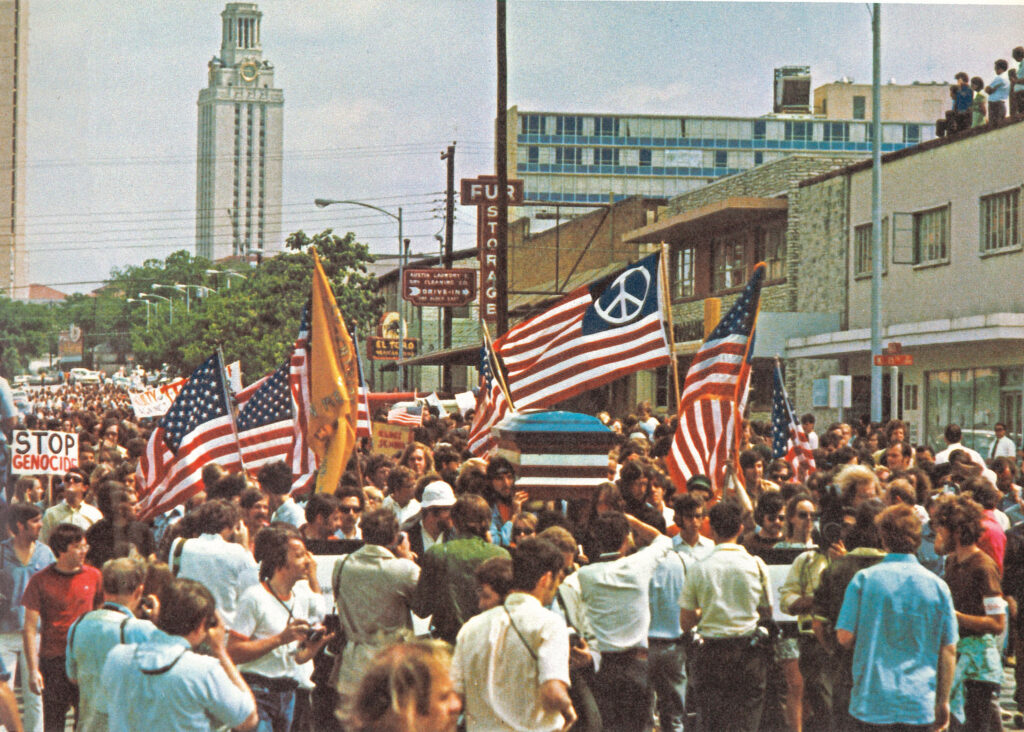
We visited the beautiful, immemorial city of Hue, with its 1,300-acre complex of imperial buildings built by the Nguyen emperors on the shore of the northern bank of the Perfume River and guarded by an expansive fortress known as the Citadel. The rebuilt temples and mandarin palaces within the Citadel were deeply evocative, but oddly less resonant than the original gray walls of the old fortress, which were still battered and gouged by the intense fighting that took place here during the 1968 Tet Offensive, when the forces of the Viet Cong and the North Vietnamese Army had risked everything on an all-out, country-wide uprising.
I broke off from the tour and trailed Ut, who had been in Hue during the battle, as he took photos of the holes in the walls and identified the projectiles—grenades from M79 launchers, 50-caliber bullets from M60 machine guns—that had made them. When two teenage girls in traditional dress—aspiring TikTok influencers, he guessed—sashayed along the battle-scarred wall, seemingly heedless of its history, he lifted his iPhone and captured an image that was so bright and untroubled it was hard to believe that it came from the same photographer—or even the same world—as his agonizing portrait of Phuc.
He and Phuc were not the only people we heard speak on board the ship about their own harrowing experiences during the war. Former NBC news correspondent Jim Laurie talked about living in Saigon during the tense, tenuous days after it fell to the North Vietnamese, and a panel of three aging American war vets recounted, sometimes through abrupt, choking tears, the “harsh, grinding, day-to-day clashes with a very determined enemy.”
Two of the men had been Army infantry officers, graduates of a West Point class that had lost 19 members in the war. The third was a graduate of the Naval Academy whose job had been to set up night ambushes along with the South Vietnamese Navy. They talked with pride about the men—“extremely brave, creative beyond belief”—they had served with; and about what it was like to struggle uphill through a jungle path carrying an 80-pound pack and a hundred rounds of machine gun ammunition. They remembered having to drink water out of streams that were poisoned by Agent Orange, and their constant worry about their men, their determination to “keep our kids alive and bring them home.”
“We went in with the right intentions,” one of the West Pointers concluded. “We did the best we could under the circumstances.”
The members of the Flying Longhorns had our own memories of that time and of the confounding war that had torn generations apart and turned UT, like so many other campuses across the country, into a cauldron of unrest. Only one of us, Rod Ellis, the retired deputy government relations officer for the City of Austin, had served in Vietnam, as a member of the 1st Signal Brigade from 1969 to 1970. He wasn’t eager to talk about the war and seemed happy to put it behind him even as he stared in amazement at a Vietnam he could barely recognize. “We really messed things up over here,” he told me one day in the third deck lounge. “We really did.”
The other draft-age males in our group had managed to avoid a previous trip to Vietnam courtesy of student deferments, service in the Army reserve, or the lotteries that began in 1969, in which your birth date corresponded with a number drawn from a container on live television. Those with higher numbers were effectively in the clear. Those with low numbers (like me, number 24) were decidedly not.
Thus it happened that only a few weeks after the first lottery in 1969, I boarded a bus for San Antonio and reported for my draft physical. I stood in my Jockey shorts with hundreds of other potential inductees, focused on a memory of my family doctor once telling me that my blood pressure was a little high. Ever since the lottery, knowing the draft was near, I had embarked on a campaign of worrying—not just about being sent to fight in a misbegotten war I might very likely not be coming back from, but worrying that I wasn’t worrying enough to elevate my blood pressure.
The strategy, if that’s what it was, ended up working. I was a legitimate 4-F, unfit for duty. It was a relief that sent my blood pressure plunging back to normal, but the sense that I had somehow gamed the system by the expert way I had deployed my anxiety left me with an unquiet conscience that this journey to Vietnam in no way abated.
UT during my college years was riven, just as the nation was, by the war. Like thousands of my fellow students, I was against the war, though there were thousands of others who believed it to be a just and necessary conflict and were annoyed by the constant marches and demonstrations. I took part in many anti-war events, and even joined a half million other activists at a peace demonstration in Washington D.C. known as the Second Moratorium. But I wasn’t really an activist. I didn’t have the intellectual grounding to state my position with any clarity. I was just a scared teenager falling into step with my agitated peers. I might have been on the right side of history in opposing the Vietnam War, but my good fortune at failing my draft physical spared me from having to test how principled my resistance really was.
I talked over my memories of those years at UT one afternoon on the observatory deck of the ship with John Pope, who had been a reporter for The Daily Texan and was now a celebrated obituary writer for the New Orleans Times-Picayune. He had been part of the reporting team that won a Pulitzer for the paper’s coverage of Hurricane Katrina.
“I never dreamed I’d be paying substantial amounts of money to come to a country that I was terrified of being sent to 50 years ago,” he told me. He said that what changed his mind was the opportunity to meet Phuc and Ut.
We were looking out over the Gulf of Tonkin, the site of the famously murky 1964 “incident” involving U.S. destroyers and North Vietnamese torpedo boats that gave the Johnson administration the casus belli necessary to turn its investment in Vietnam into a real, if undeclared, war.
Our trip came to its end in the teeming, confounding capitol of Hanoi, where we visited the mausoleum of Ho Chi Minh, watched couples waltzing at dawn in a downtown park, and strolled through a 1,000-year-old Confucian temple and university, which contained within it a structure that warmed my English major heart—the Pavilion of the Consolation of Literature.
But I took in all these sights through a complex scrim of emotions, recalling our last day at sea when we had assembled at the stern of the ship for a ceremony to remember all the people—Vietnamese and Americans—whose lives had been lost or otherwise grievously affected by the war.
The ship’s sound system played “Where Have All the Flowers Gone,” after which, in silence and with unexpected tears welling in our eyes, the passengers were invited to select a white rose and toss it overboard. When it was my turn, I made the gesture in honor of four friends who had fought in Vietnam. All had survived, though one had died young years before of a suspicious cancer, and another had just passed away of a bronchial disease that has been linked to the use of wartime toxic chemicals. The other two, it seemed to me, were still fighting the war—in terms of PTSD or indefinable unease—deep into their 70s.
And then I remembered the strangers who had been with me at that induction center in San Antonio during my draft physical, kids like me with low lottery numbers but who had never had a student deferment or the dumb luck of an exploitable health concern. Many of them would have gone to war when I had not; some of them no doubt died in this country whose beauty, history, and intoxicating reanimation I had just witnessed as a privileged tourist. I tossed another rose overboard for them, and watched—guiltily, solemnly, gratefully—as it receded into the green waters of the Gulf of Tonkin.
CREDITS: Illustration by Xuan Loc Xuan, Patton Reighard, Shutterstock, Cary Grace, Patton Reighard (2), Pat Smith, Patton Reighard, Cactus yearbook


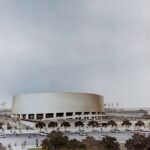












1 Comment